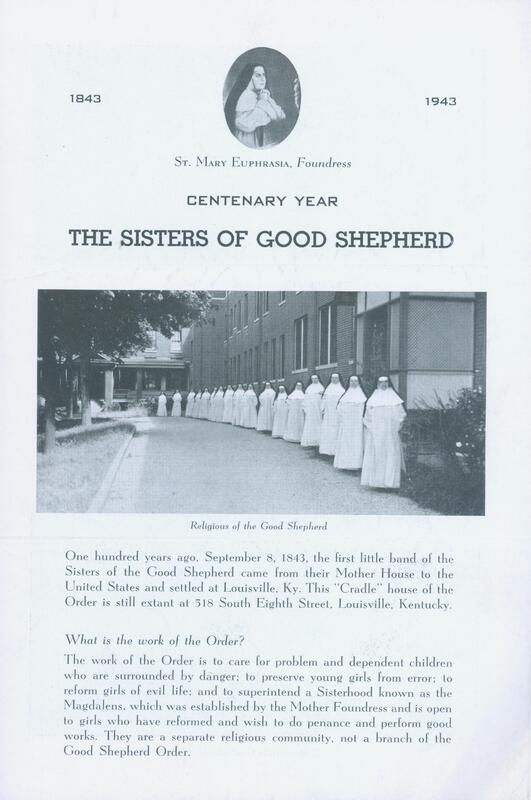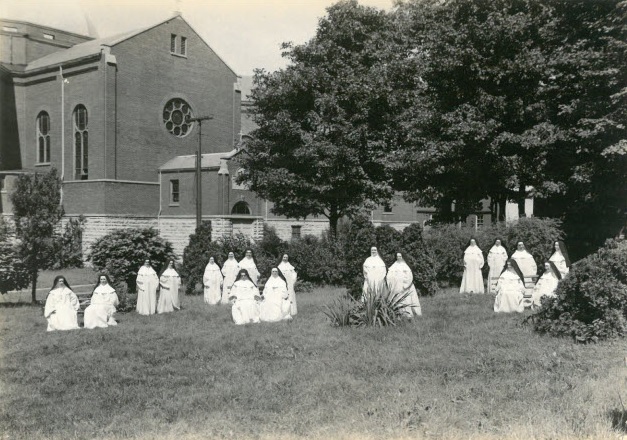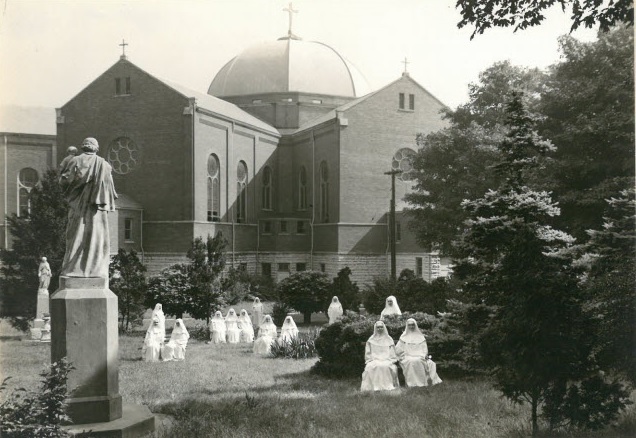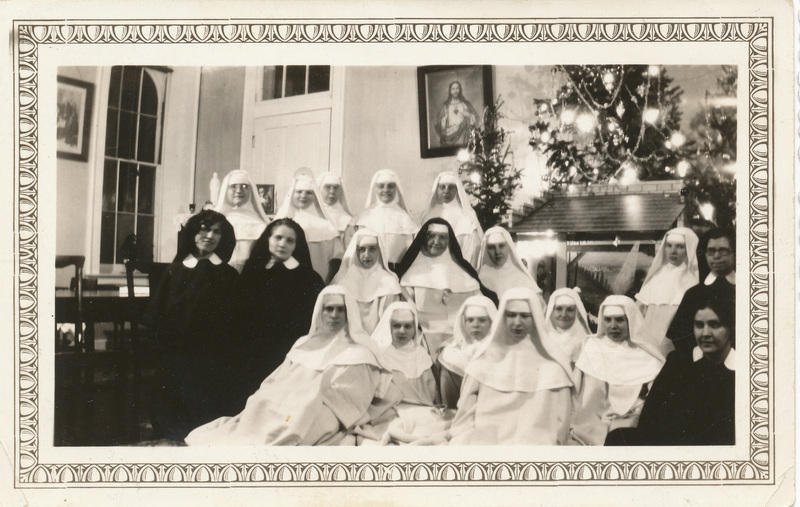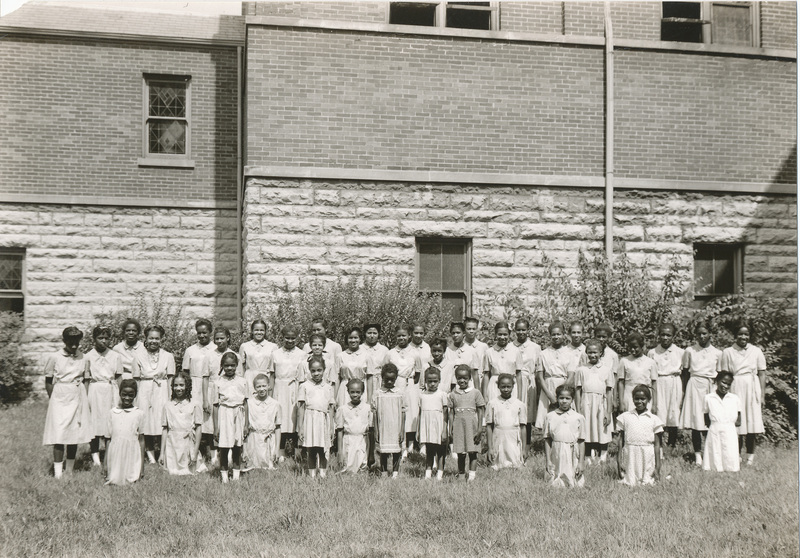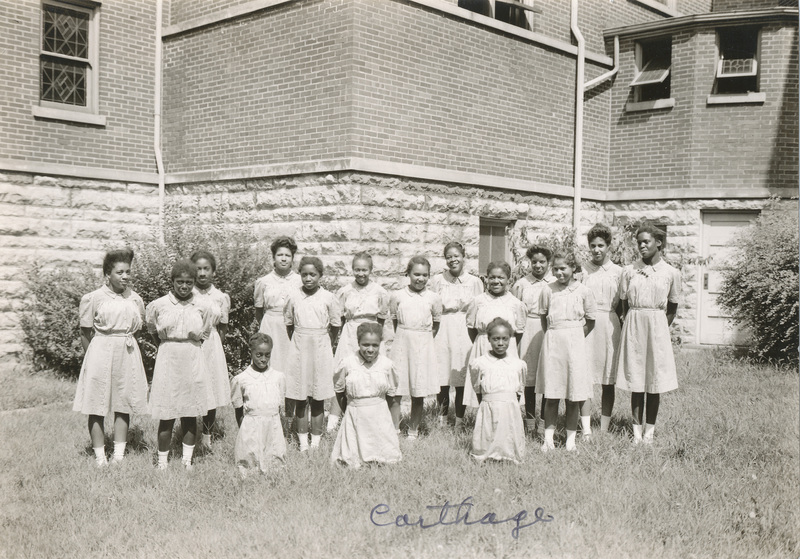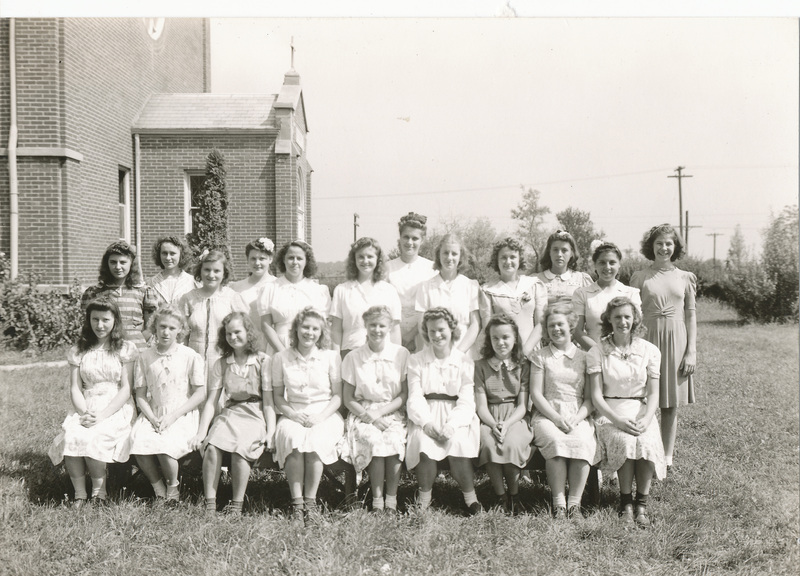Communities
Living at the Carthage site were 4 groups:
- The Sisters of the Good Shepherd, vowed religious referred to as "Mothers," along with postulants and novices who aspired to become Sisters.
- The Magdalens, a contemplative community supervised by the Sisters of the Good Shepherd. Magdalens were not able to become Good Shepherd Sisters. They made annual, temporary vows over a 10 year period, after which they could make make perpetual vows. They were known for fine embroidery, sewing altar linens and vestments, and making altar breads.
- The "children"--the term used for the girls and women cared for and educated at Our Lady of the Woods. These included
- penitents or the reformatory class, sometimes called "problem" or "delinquent " women and girls, or "fallen women and girls," as they were listed in the Benevolent Institutions Censuses of 1904 and 1910 .
- dependents, also known as the preservate or preservation class, sent to the facility due to destitution or unfavorable home conditions.
According to Phillips, "the terms penitent class or preservate class were used routinely in the nineteenth century, but were phased out and finally eliminated during the late 1930s to prevent the girls’ developing a sense of stigma associated with being considered a 'bad girl.'" (p. 139)
The delinquent and dependent classes lived separately. The institution served both black and white girls of both classes; in the early to mid-twentieth century, the races were housed separately and had separate entrances to the Chapel. Photographs from the late 1940's and later show mixed race groups engaging in various activities.

